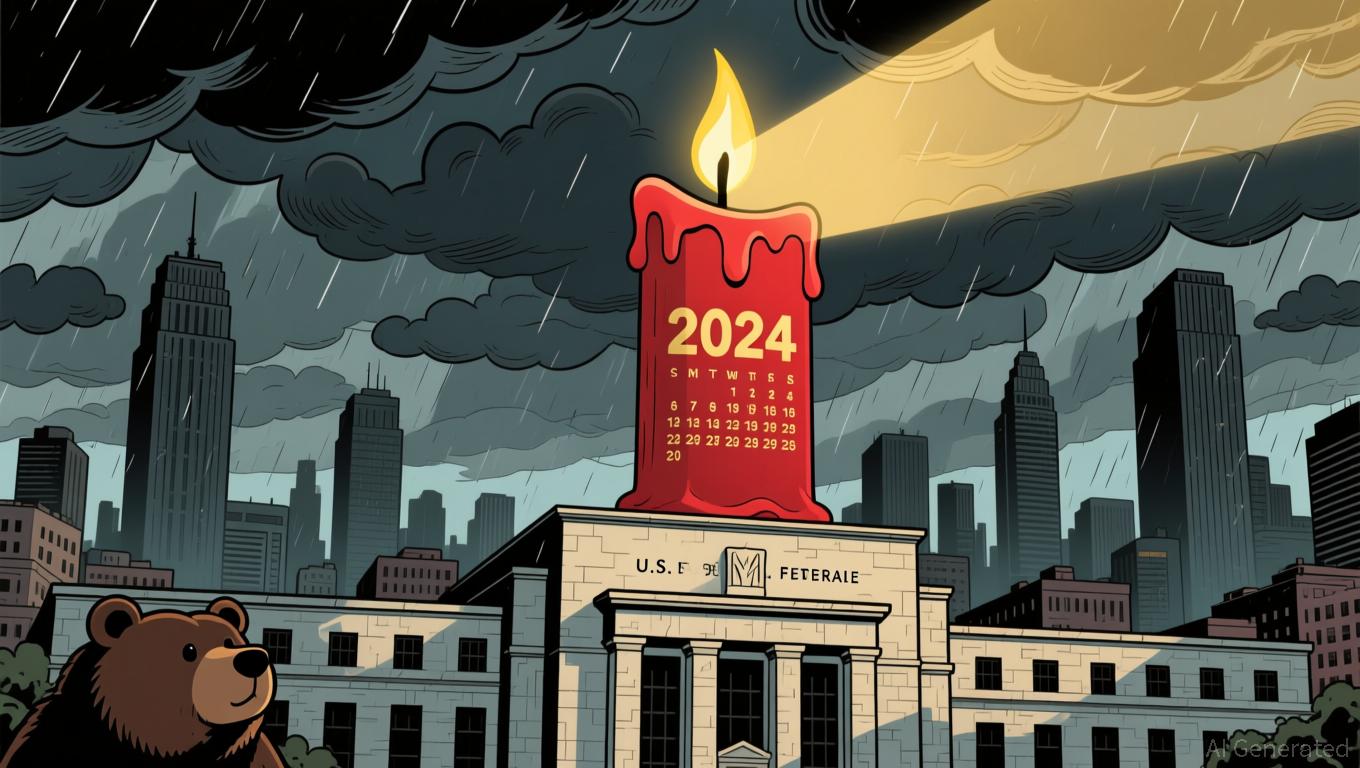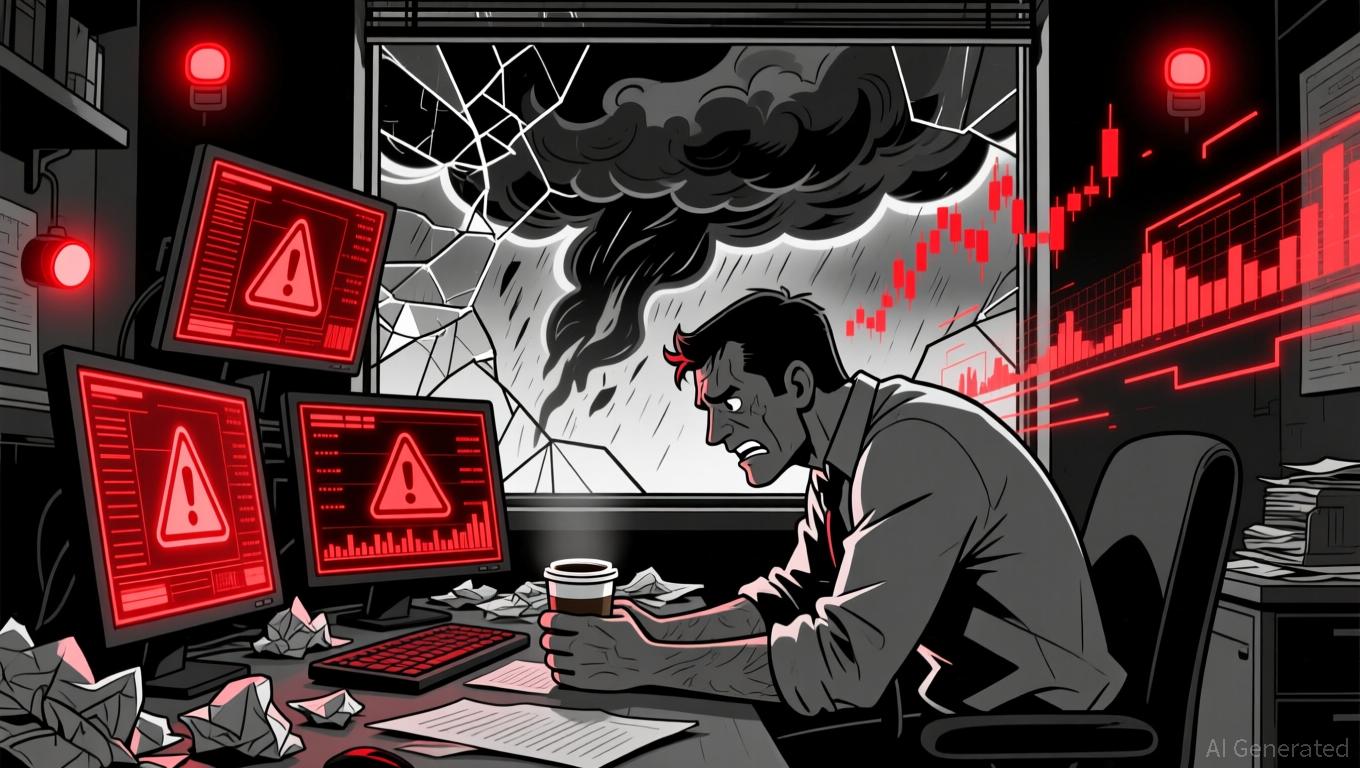Kiyosaki: Rising AI and Political Stalemate Set Stage for Imminent Wave of Job Losses
- Robert Kiyosaki warns mass layoffs could accelerate due to AI automation and U.S. government shutdown risks. - He highlights vulnerable sectors like admin/support roles, citing Goldman Sachs' 25% U.S. job exposure estimate to AI disruption. - Kiyosaki stresses political gridlock may delay AI infrastructure projects and workforce reskilling efforts critical for economic transition. - While acknowledging AI's potential for growth in healthcare/energy, he urges balanced policies prioritizing human-AI collab

Robert Kiyosaki, best known for writing Rich Dad Poor Dad, has delivered a serious alert regarding the potential for widespread layoffs, attributing the risk to both the swift progress of artificial intelligence (AI) and the possibility of a U.S. government shutdown. In his recent analysis, Kiyosaki pointed out that the combination of AI-powered automation and ongoing economic uncertainty could intensify job losses, resulting in an unpredictable climate for employees and companies. His comments arrive as anxiety grows about how fast technology is changing the employment landscape.
Kiyosaki’s concerns are consistent with broader forecasts about AI’s influence on jobs. Sam Altman, OpenAI’s CEO, has suggested that by 2030, AI might automate 30–40% of economic activities. Kiyosaki warns that the overlap of rapid AI integration and political instability could speed up workforce reductions. He noted that industries involving repetitive or routine work—like administrative support, customer service, and manufacturing—are especially at risk. This view is supported by a Goldman Sachs analysis, which predicts that almost a quarter of U.S. jobs could be heavily impacted by AI, with office and administrative positions being the most susceptible.
The risk of a government shutdown further complicates the situation. According to Kiyosaki, extended political deadlock could hinder infrastructure initiatives and regulatory systems essential for adapting to an AI-centered economy. For example, the partnership between OpenAI and Oracle to expand data centers—a key step in building AI infrastructure—could be stalled if federal funding is interrupted. Such setbacks might delay the rollout of AI solutions aimed at helping workers retrain and transition into new technology-focused roles.
Despite these obstacles, Kiyosaki also recognized that AI presents opportunities for economic advancement and innovation. He highlighted the potential for AI to boost efficiency in fields such as healthcare, education, and clean energy, where collaboration between humans and AI could drive significant change. However, he emphasized that these positive outcomes depend on whether leaders and companies focus on helping workers adapt. “It’s crucial to match technological advancement with a sense of social duty,” Kiyosaki said, underlining the importance of specialized training and fair access to AI technologies.
Recent research supports these warnings about AI’s effects on employment. A study from Northeastern University revealed that while AI can take over certain tasks, it often transforms job responsibilities instead of eliminating positions altogether. For instance, radiologists, once thought to be at risk from AI, have shifted their focus to more complex diagnostics and patient interaction. Still, Kiyosaki warned that such adaptability relies on timely investment in education and skills training, which could be delayed by political or economic challenges.
With these dual challenges facing the U.S. workforce, Kiyosaki urged a unified effort from policymakers, businesses, and educational organizations. He recommended policies that encourage the creation of AI-related jobs in fast-growing sectors like cybersecurity, data analysis, and renewable energy. He also called on companies to use AI in ways that support, rather than replace, human workers.
The pressing nature of these concerns is highlighted by current labor market trends. Research from Goldman Sachs indicates that temporary staffing—a key indicator of economic vitality—has decreased, suggesting a possible downturn. At the same time, job openings in manual and clerical fields have fallen sharply compared to before the pandemic, hinting at the early effects of AI-driven job changes. Kiyosaki’s warning is a prompt for all involved to address these developments before they escalate into a major crisis.
Source: [1] Robert Kiyosaki Warns of Mass Layoffs as Government Shutdown Threat Shakes the System – Featured
Disclaimer: The content of this article solely reflects the author's opinion and does not represent the platform in any capacity. This article is not intended to serve as a reference for making investment decisions.
You may also like
Bitcoin Updates: Bitcoin Climbs Even as ETF Outflows Hit Record Highs and Hopes for Fed Rate Cuts Fade
- Bitcoin rebounds as markets price a 46% chance of a December Fed rate cut, down from 93.7% in October. - U.S. spot Bitcoin ETFs saw $523M in single-day outflows, with BlackRock's IBIT leading $2.1B in redemptions. - Technical indicators show a fourth "death cross" and declining liquidity amid unresolved macro risks. - Traders add $5.7M in short positions, reflecting broader caution as crypto faces regulatory and volatility challenges.

Ethereum News Update: With Major Ethereum Holders Pulling Back and Tron Showing Little Movement, LivLive and BlockchainFX Are Driving the Crypto Market's Revival
- LivLive’s presale surpassed $2.1M, driven by real-world engagement and AR missions, offering 100%-200% token bonuses to early investors. - BlockchainFX secured $11M in presale funding with an international trading license, using a deflationary model to boost long-term value. - Ethereum whales retreated, while Tron’s TVL dropped to $4.58B amid stagnation and regulatory scrutiny. - Crypto’s shift favors projects with utility and compliance, with LivLive and BlockchainFX leading the resurgence amid broader

Zcash Halving and Its Effects on the Crypto Market
- Zcash's November 2025 halving reduces block rewards by 50%, tightening supply and reinforcing its deflationary model akin to Bitcoin . - ZIP 1015's lockbox mechanism removes ~$337,000 daily liquidity, while ZEC's price surged 1,172% YTD amid privacy-driven demand and institutional adoption. - Institutional investments like Grayscale Zcash Trust and 5% supply acquisitions highlight growing acceptance as a strategic reserve asset. - Privacy-focused adoption (28% shielded transactions) and negative Bitcoin
Bitcoin Drops 1.11% as Multi-Chain Growth Accelerates and New Regulatory Measures Emerge
- Bitcoin .ℏ integrates Hashport for cross-chain transfers, boosting liquidity and DeFi accessibility across Ethereum , Polygon, and BNB Chain. - U.S. proposes "Bitcoin for America Act" to allow tax payments in BTC, eliminating capital gains tax and positioning crypto as strategic national asset. - BTC price drops 1.11% amid $3.79B ETF outflows, with technical indicators like death cross signaling extended bearish momentum. - Whale activity shows leveraged long positions at $84,400, contrasting short-term
